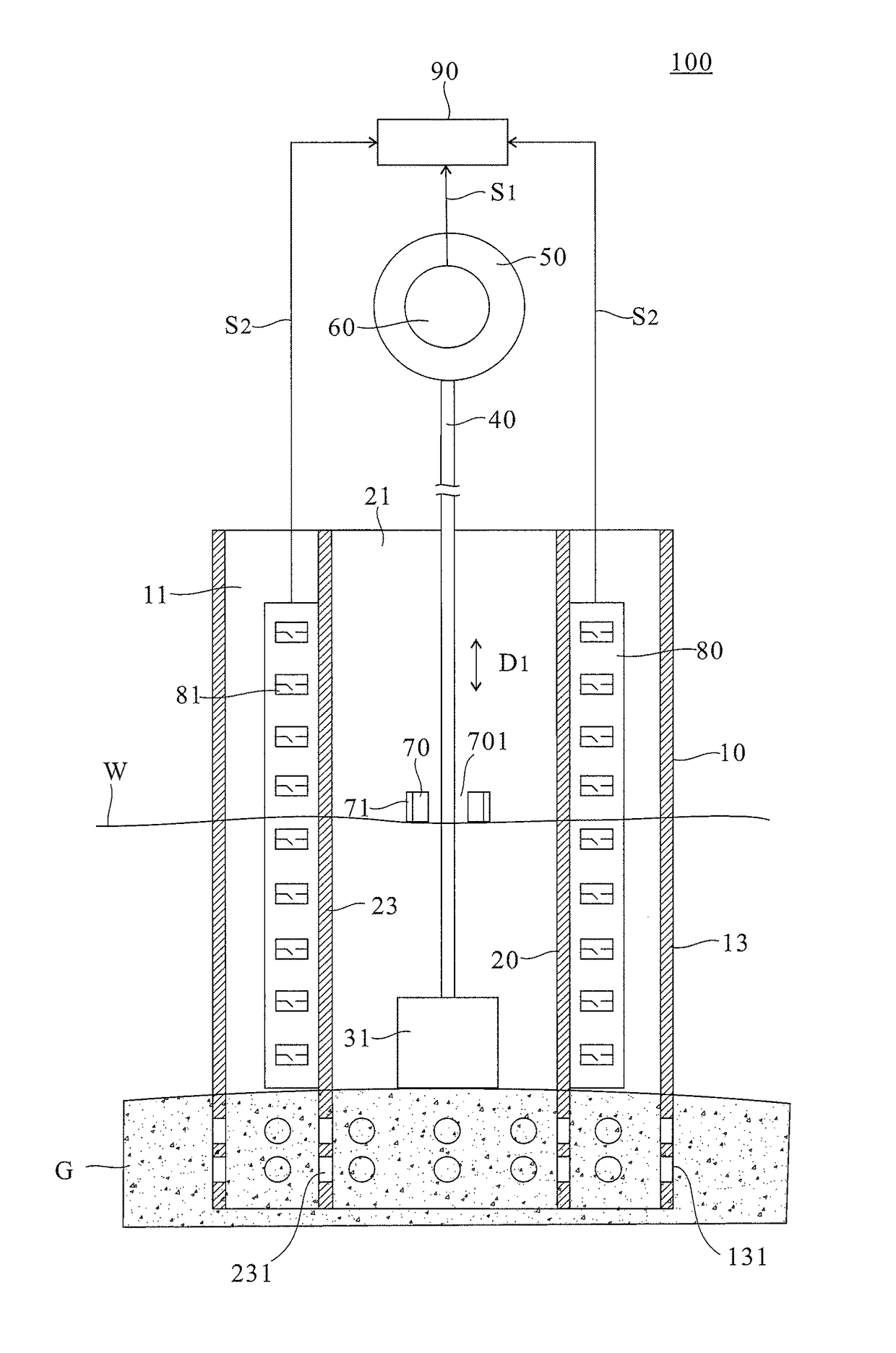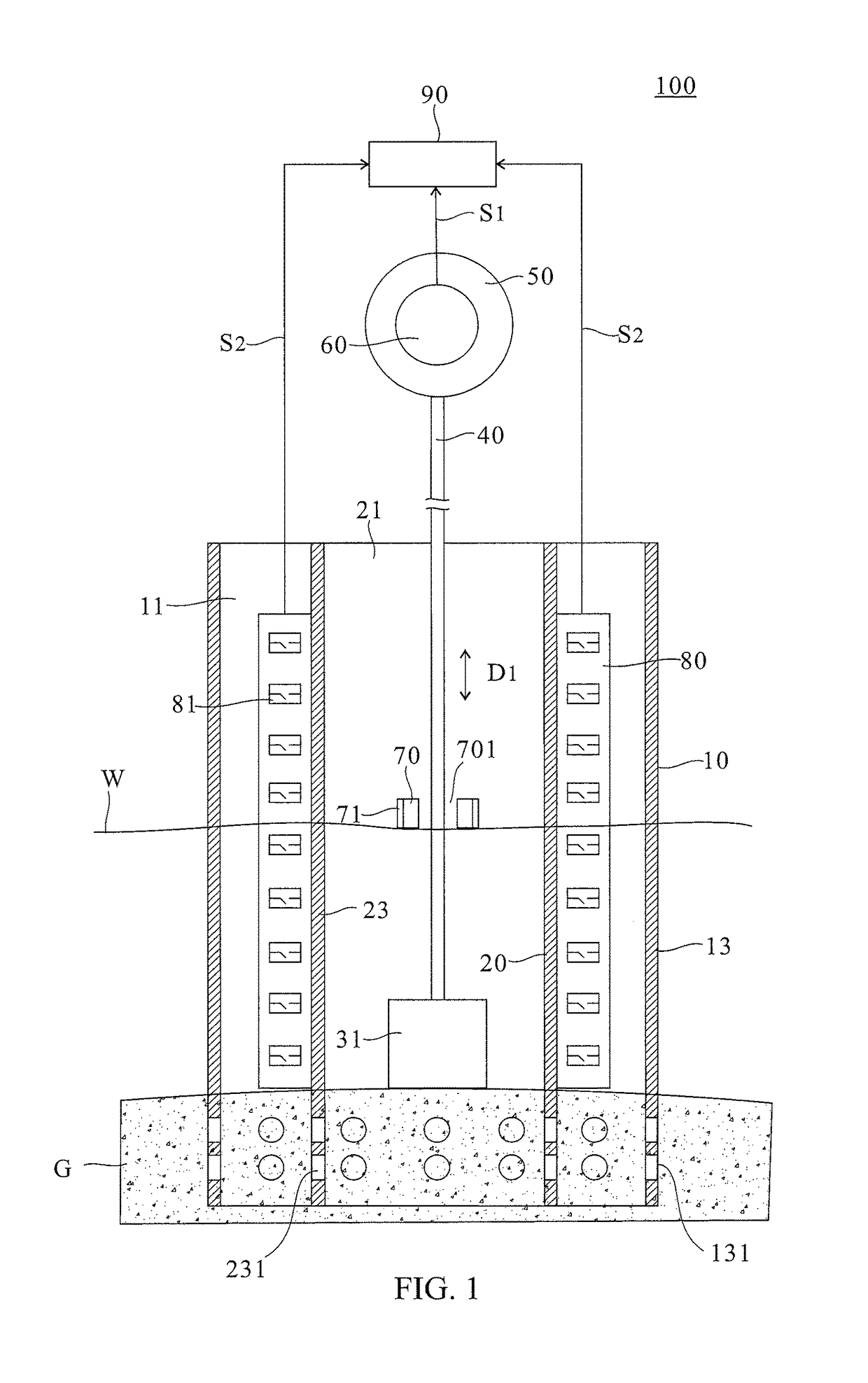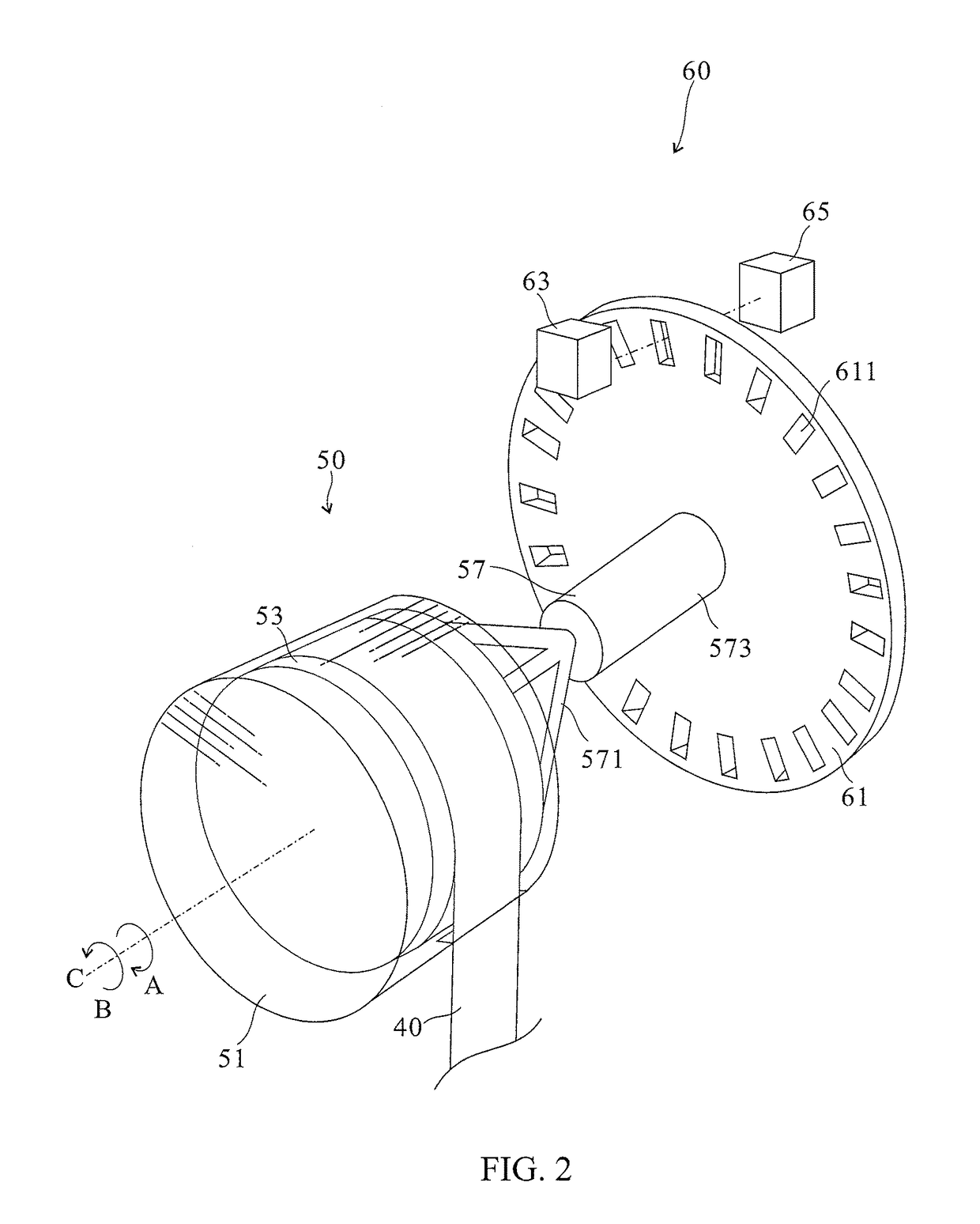Composite hydrological monitoring system
a hydrological monitoring and composite technology, applied in the field of composite hydrological monitoring systems, can solve the problems of complex circuit structure, high cost, complex structure and economic disadvantages, etc., and achieve the effects of low cost, simple structure and easy construction
- Summary
- Abstract
- Description
- Claims
- Application Information
AI Technical Summary
Benefits of technology
Problems solved by technology
Method used
Image
Examples
first embodiment
[0036]Please refer to FIG. 4 for detail description between the float 70 and the second sensor 81. As illustrated in FIG. 4, the sensing elements 81 of the second sensor 80 are disposed symmetrically on the opposite inner sidewall of the first hollow base body (not shown) and the opposite outer sidewall of the second hollow base body (not shown) for forming a first sensing part 801 and a second sensing part 803. In this case, the magnetic switch is used as the sensing element 81 for exemplifying the Those sensing element 81 of the first sensing part 801 and the second sensing part 803 located at positions Y1, Y2, Y3 . . . are connected in parallel to two wires 83 and are arranged in a row along the vertical direction at a predetermined interval of 5 cm from one another. Accordingly, as illustrated in FIG. 4, when the float 70 is floating on the water surface that corresponds to the sensing element 81 at the vertical position Y3, the magnetic element 71 on the float 70 triggers the ...
second embodiment
[0040]In addition, another embodiment of the second sensor 80 is illustrated in FIG. 7. As illustrated in FIG. 7, the induced coil surrounds the positions Y1, Y2, Y3 . . . of the outer sidewall of the second hollow base body 20 as the sensing elements 81. When the float 70 passes vertically through the corresponding inductive coil along with the water surface, the magnetic element 71 having high magnetic permeability on the float 70 will affect the inductive coil and cause the electric or magnetic changes (such as inductance, electromotive force, magnetic force, or the like). Accordingly, the location of the float 70 may be determined by detecting the electric or magnetic changes of the inductive coil (such as inductance, electromotive force, magnetic force, or the like) when the float 70 passes through the inductive coil. Similarly, the vibration of the float 70 caused by the turbulence may result in electric or / and magnetic changes so that the flow velocity of the river may be obt...
PUM
 Login to View More
Login to View More Abstract
Description
Claims
Application Information
 Login to View More
Login to View More - R&D
- Intellectual Property
- Life Sciences
- Materials
- Tech Scout
- Unparalleled Data Quality
- Higher Quality Content
- 60% Fewer Hallucinations
Browse by: Latest US Patents, China's latest patents, Technical Efficacy Thesaurus, Application Domain, Technology Topic, Popular Technical Reports.
© 2025 PatSnap. All rights reserved.Legal|Privacy policy|Modern Slavery Act Transparency Statement|Sitemap|About US| Contact US: help@patsnap.com



